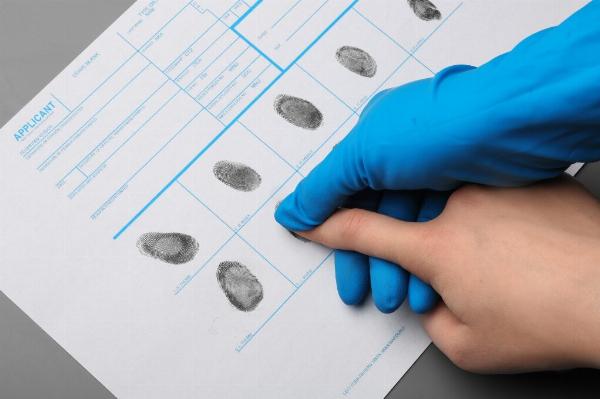Ink and Roll Fingerprinting - Process, Benefits, and Distinctions

Strong 8k brings an ultra-HD IPTV experience to your living room and your pocket.
Ink and roll fingerprinting, a traditional method rooted in forensic science, continues to play a crucial role in various sectors despite the advent of digital fingerprinting technologies. This article aims to provide an in-depth exploration of ink and roll fingerprinting, including its definition, importance, benefits, distinctions from digital fingerprinting, and the process involved.
What is Ink and Roll Fingerprinting?
Ink and roll fingerprinting, also known as manual fingerprinting or inked fingerprinting, is a method of capturing fingerprints using ink and specialized fingerprint cards. In this process, an individual's fingers are coated with ink and rolled onto a designated area of the fingerprint card, leaving behind impressions of the unique ridge patterns. These fingerprint cards serve as permanent records for identification, verification, and forensic analysis.
Why is Ink and Roll Fingerprinting Required?
Ink and roll fingerprinting serves several critical purposes in various sectors:
Law Enforcement: Law enforcement agencies use ink and roll fingerprinting to collect and catalog fingerprints from suspects, detainees, and individuals involved in criminal investigations. These fingerprints serve as valuable evidence for identifying suspects, linking them to criminal activities, and building cases for prosecution.
Background Checks: Employers, government agencies, and regulatory bodies often require ink and roll fingerprinting as part of background checks for employment, licensing, or security clearance purposes. Fingerprint-based background checks help verify individuals' identities, criminal histories, and eligibility for certain roles or privileges.
Immigration and Visa Applications: Immigration authorities may require ink and roll fingerprinting as part of visa applications, residency permits, or citizenship processes. Fingerprinting helps establish identity, conduct security screenings, and prevent identity fraud or document forgery.
Adoption and Foster Care: Agencies involved in adoption and foster care placements may request ink and roll fingerprinting to assess the suitability and background of prospective caregivers. Fingerprint-based background checks help ensure the safety and well-being of vulnerable individuals, particularly children.
Benefits of Ink and Roll Fingerprinting:
Accuracy and Reliability: Ink and roll fingerprinting produces high-quality, permanent impressions that are accurate and reliable for identification and forensic analysis. The physical nature of inked fingerprints ensures durability and longevity, making them suitable for long-term record-keeping.
Versatility and Accessibility: Ink and roll fingerprinting can be conducted in various settings, including police stations, government offices, fingerprinting agencies, and mobile units. This accessibility makes it convenient for individuals to fulfill fingerprinting requirements without relying on specialized equipment or technology.
Forensic Value: Ink and roll fingerprints serve as valuable forensic evidence in criminal investigations, court proceedings, and forensic analyses. The unique ridge patterns and minutiae details captured in inked fingerprints aid in matching suspects to crime scenes and identifying unknown individuals.
Non-digital Security: Ink and roll fingerprinting offer a non-digital alternative for identity verification and background checks, reducing the risk of cyber threats, data breaches, and identity theft associated with digital fingerprinting methods.
Differences from Digital Fingerprinting:
While ink and roll fingerprinting shares the objective of identifying individuals through fingerprint impressions, it differs from digital fingerprinting in several aspects:
Technology: Ink and roll fingerprinting relies on manual techniques and physical mediums such as ink pads and fingerprint cards, whereas digital fingerprinting uses electronic scanners and software to capture and process fingerprint images.
Data Format: Ink and roll fingerprinting produces physical impressions on paper cards, which are manually stored and archived. In contrast, digital fingerprinting generates electronic files containing digital images of fingerprints, which can be stored, transmitted, and processed electronically.
Accuracy and Speed: Digital fingerprinting offers faster capture and processing of fingerprint images, with higher accuracy and resolution compared to ink and roll fingerprinting. Digital methods also allow for real-time verification and comparison of fingerprints against databases.
Cost and Convenience: Ink and roll fingerprinting may require specialized equipment, ink supplies, and trained personnel to conduct the process manually, leading to higher costs and logistical challenges. Digital fingerprinting, on the other hand, offers cost-effective, scalable solutions with greater convenience and efficiency.
The Process of Ink and Roll Fingerprinting:
Preparation: The individual undergoing fingerprinting is instructed to clean their hands to remove any dirt, oil, or residue that may affect the quality of impressions. The fingerprint technician prepares the ink pad and fingerprint cards for the process.
Inking: The individual's fingers are individually inked by rolling them carefully onto the ink pad to ensure uniform coverage of ink. Excess ink is removed by gently rolling the fingers on a clean surface or blotting paper to prevent smudging.
Rolling: With inked fingers, the individual's fingerprints are systematically rolled onto designated areas of the fingerprint card, starting from the thumbs and proceeding to the other fingers. The technician guides the individual to ensure proper positioning and pressure for clear impressions.
Verification: Once all fingerprints are captured on the card, the technician inspects each impression for clarity, completeness, and alignment. Any smudges or incomplete impressions may require re-inking and re-rolling to ensure accuracy.
Documentation: The completed fingerprint card is labeled with the individual's information, such as name, date of birth, and purpose of fingerprinting. Additional documentation, such as signatures or witness attestations, may be required depending on the jurisdiction and application.
Storage and Submission: The fingerprint card is securely stored and archived for future reference or submission to relevant authorities, such as law enforcement agencies, background check providers, or immigration offices. Proper handling and chain of custody procedures are followed to maintain the integrity of the fingerprints.
Ink and roll fingerprinting, rooted in tradition and forensic science, continues to serve as a valuable tool for identification, verification, and forensic analysis in various sectors. Despite the emergence of digital fingerprinting technologies, ink and roll fingerprinting offers unique benefits, including accuracy, reliability, versatility, and forensic value. Understanding the process, benefits, and distinctions of ink and roll fingerprinting is essential for organizations, agencies, and individuals seeking reliable methods of identity verification and background checks.
Note: IndiBlogHub features both user-submitted and editorial content. We do not verify third-party contributions. Read our Disclaimer and Privacy Policyfor details.


